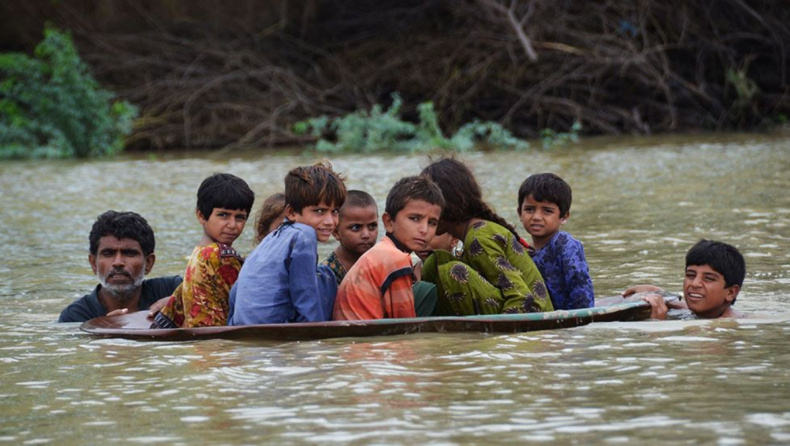Pakistan floods have impacted nearly 16 million children, says the United Nations.

Since June 14th, 2022, Pakistan has been experiencing one of the worst disasters in its history. The floods in Pakistan have claimed 1,486 lives, caused by very heavy rainfalls and the melting glaciers.
This leads to water-borne diseases and infections. Children and women remain the most vulnerable sections of society to illnesses.
Reports say that the State will return to normalcy after 2 to 6 months. Several regions of Pakistan have been infected with diseases like malaria, dengue fever, skin problems, diarrhoea.
Prime Minister Shehbaz Sharif said in the Shanghai Cooperation Organization (SCO) summit in Samarkand, Uzbekistan, that water which is stagnant leads to aforementioned diseases.
According to a UNICEF report, 1 out of 3 children are underweight. Due to these high malnourishment rates in the country, children and women have poor health and get infected easily.
The Sindh reported that on Thursday alone, 90,000 people were treated in the Sindh province.
- Malaria – 588 confirmed, 10,604 suspected
- Diarrhoea – 17,977
- Skin Diseases – 20,064
Since July, around 2.3 million people have been treated.
Some other areas were experiencing respiratory problems, eye infections, typhoid, scabies, etc.
Various areas are also facing shortages of basic necessities and medicines. There are no means to possibly transport these supplies and medicines to them.
Economic Losses:
Floods have affected roads, bridges, animals, homes, the estimated damage done is 30 billion US dollars.
Country’s GDP has come down to 3%, their target being 5% set out in the budget when the country has just managed to escape defaulting on its debt in a balance of a payment crisis.
The State has been witnessing economic problems, time after time. The foreign reserves of Pakistan have been consistently decreasing. With this calamity, the economy is sinking even more.
The country has foreign debt of nearly $100 billion, of which close to a third is owed to China, while $42 billion is owed to multilateral agencies such as the World Bank, and more than $5 billion to Japan, according to the IMF.
Not just economic but political instability and uncertainty has led the country to a greater loss.
The Pakistani rupee has been tumbling and inflation has topped 27%.
Millions of people are still in great need of food, shelter, clean drinking water, toilets and medicines. Thousands are sleeping in the open, on the sides of elevated highways to be safe from the rising water levels.
The United Nations High Commissioner for Refugees (UNHCR) has said that about 16 million children have been affected and 3.4 children are in immediate need of help.
The country received 391 mm (15.4 inches) of rain, or some 190% more than the 30-year average through July and August, a monsoon spell that started early and stretched beyond the usual timeline. Rainfall in the southern province of Sindh shot up to 466% of the average.
Farmers of Pakistan say that they have gone back 50 years. All their work has been damaged and is almost irreversible.
The calamity has mostly impacted the poor and vulnerable. They have led around 90 lakhs to 1.2 crore more citizens into poverty.
2010 floods of Pakistan:
The natural disaster has led to questions over the country’s actions taken towards prevention of such problems.
In 2010, Pakistan had seen disastrous floods. In 12 years, negligible amounts of changes and preparedness have been seen. More than a decade is good enough time to make changes in the infrastructure, budgeting and operations.
2010 floods led to 1700 deaths, more than 20% of land area was impacted, 42 percent of properties, housing ones, were completely destroyed. Only 9% of houses managed to not meet their destruction.

Coming to agriculture, around 2 million hectares of standing crops were either damaged or lost. Production losses of paddy crops, sugarcane and cotton was estimated at 13.3 million metric tonnes.
Even then, thousands of people experienced poverty. The socio-economic disparities have worsened the situation. Countries like Pakistan take a greater amount of time to bounce back from such losses.
As mentioned earlier, the country has been barely making it out of debts, getting financial aid from organizations and other countries, to be hit by another devastating situation like this will only push it back even further, making it even poorer. Reconstruction costs, rehabilitation costs were very high back in 2010 and will be even higher now.
Video Source- CNBC-TV18













